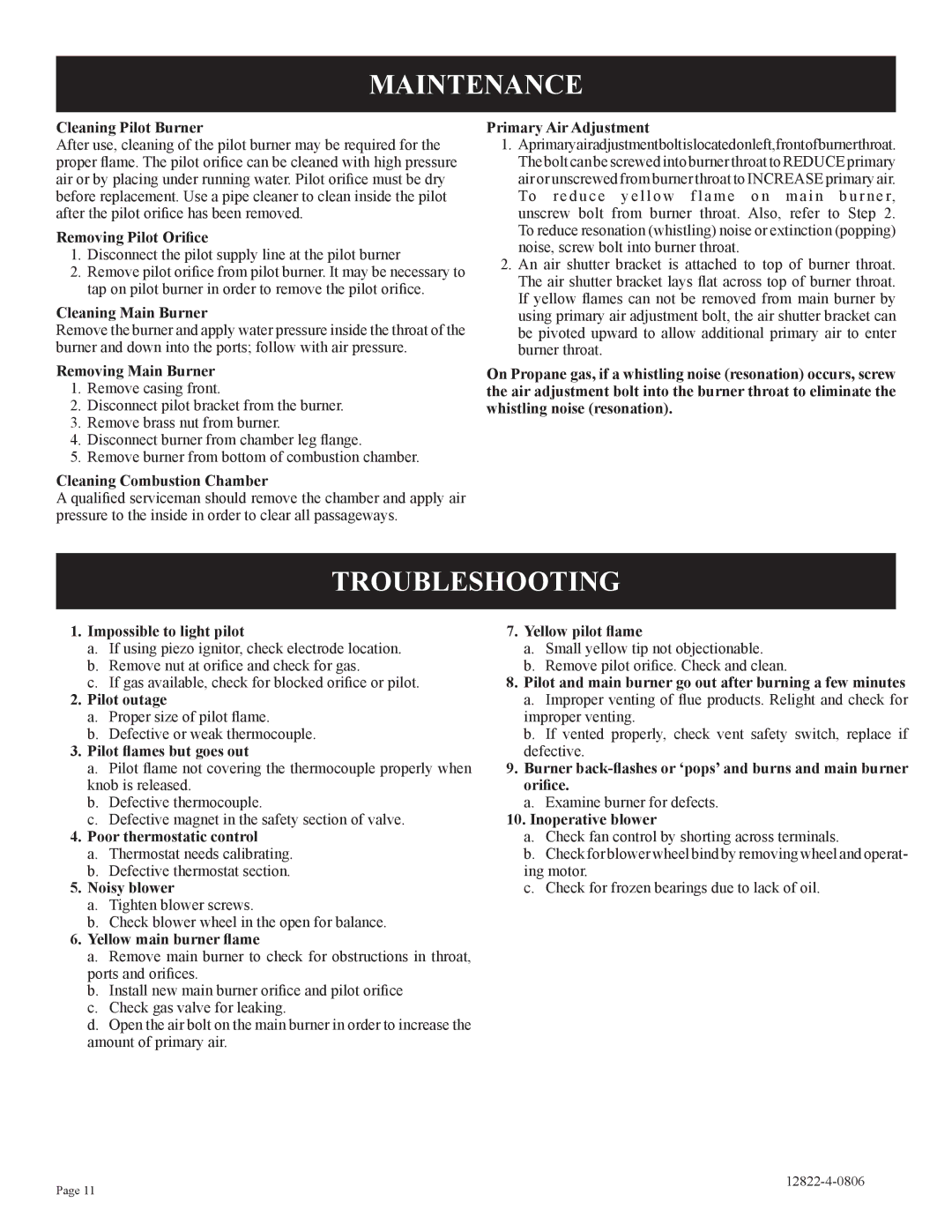RH-65-6, RH-65C-1, RH-50-6, RH50C-1 specifications
Empire Comfort Systems has long been a trusted name in the heating solutions market, and their RH series of direct-vent gas heaters exemplifies their commitment to quality and innovation. Among the models in this series, the RH-50-6, RH-65-6, RH-65C-1, and RH-50C-1 stand out for their exceptional performance and user-friendly features.The RH-50-6 offers a heat output of 50,000 BTUs, making it ideal for smaller spaces needing effective, efficient heating. It features a sleek design and a variety of style options, ensuring it can fit seamlessly into any room. Its direct vent system allows for safe and efficient operation, drawing air from the outside while expelling exhaust gases, thus creating a comfortable indoor environment without compromising indoor air quality.
Similarly, the RH-65-6 model provides a higher output of 65,000 BTUs, suitable for medium to larger areas. This model emphasizes user control with an optional remote control feature, allowing homeowners to adjust the thermostat from the comfort of their couch. The easy-to-use control panel enhances operation simplicity, catering to users of all levels of technical know-how.
The RH-65C-1 and RH-50C-1 models bring additional benefits through their contemporary styling and advanced features. Both units include Empire's exclusive Comfort Control technology. This system optimizes heat distribution throughout the room, ensuring that users experience consistent warmth without hot or cold spots. Alongside aesthetic choices, such as ceramic glass fronts and versatile trim options, these models are designed to provide both functionality and style.
One significant feature across the RH series is the emphasis on energy efficiency. These models meet stringent energy standards, helping homeowners save on utility bills while minimizing environmental impact. The advanced burner technology ensures a clean burn with minimal emissions, aligning with sustainable heating practices.
In conclusion, the Empire Comfort Systems RH-50-6, RH-65-6, RH-65C-1, and RH-50C-1 represent a blend of traditional craftsmanship and modern technology. With various BTU outputs, user-friendly controls, and striking designs, they cater to diverse heating needs, making them outstanding choices for those seeking reliable and efficient home heating solutions.

